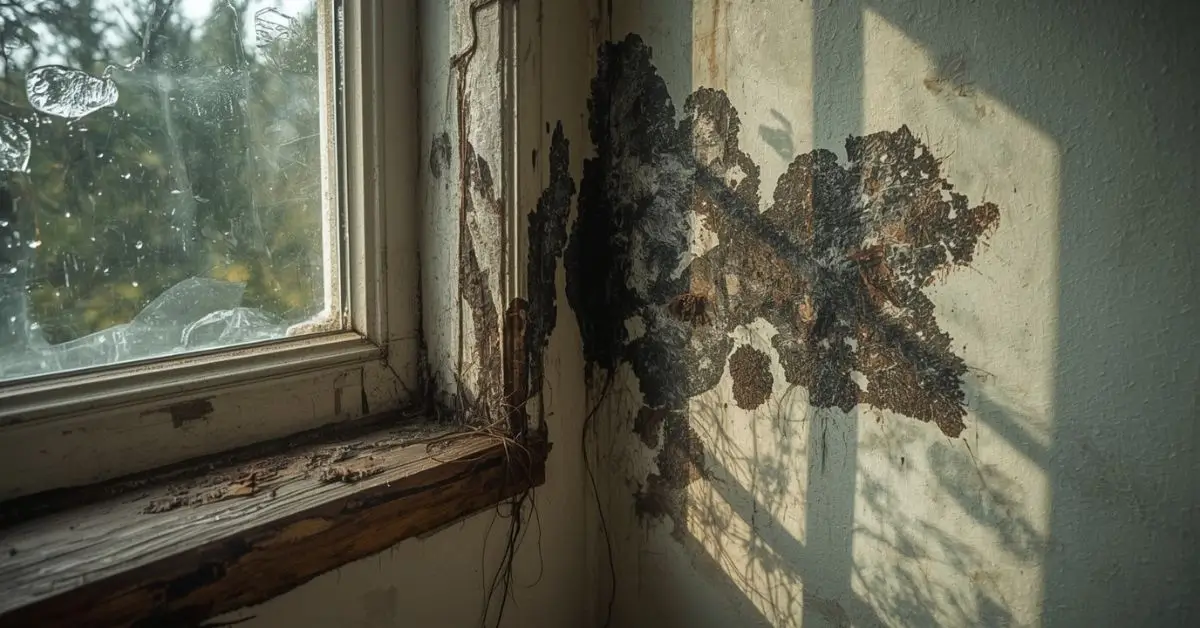BLOG
Roasting in Style: The Perils of a Dark Shirt in Summer Heat

Roasting in Style: The Perils of a Dark Shirt in Summer Heat
When the scorching sun dominates the sky, fashion often takes a backseat to comfort. But for some, style is non-negotiable—even in the middle of a heatwave. Wearing a dark shirt in summer might seem like a bold fashion choice, but it comes with unexpected consequences. Beyond aesthetics, this decision significantly impacts body temperature, sweat levels, and even skin health. As we navigate through the warmest months of the year, it’s essential to understand how fabric color, heat absorption, and thermoregulation intersect with daily clothing choices.
Understanding Heat Absorption and Color Psychology
One of the most overlooked yet scientifically grounded concepts in fashion is how color affects heat absorption. Dark colors, especially black and navy, absorb more wavelengths of light than lighter shades. This means they convert more light into heat, raising the temperature of the material and, subsequently, your body.

In contrast, lighter colors like white, beige, and pastels reflect more sunlight, allowing your skin to stay relatively cool. This principle isn’t just rooted in physics—it has direct physiological consequences. Wearing a black shirt under the summer sun can make your upper body feel up to 10 degrees hotter than someone wearing white. That difference can mean discomfort, excessive sweating, or worse, potential heat exhaustion.
The Thermoregulation Struggle
Our bodies are equipped with thermoregulatory systems designed to maintain core temperature. Sweating is a natural response that cools the skin through evaporation. But when you wear heat-absorbing clothing like a dark shirt, you’re essentially working against your body’s natural cooling process. The trapped heat makes it harder for sweat to evaporate, increasing discomfort.
This challenge is exacerbated in urban environments, where the urban heat island effect intensifies surrounding temperatures. Asphalt, metal, and concrete surfaces already radiate retained heat, and adding a dark outfit to the equation makes the wearer even more vulnerable.
Material Matters: Cotton vs. Polyester in the Heat
While color plays a massive role, fabric composition also impacts how hot you’ll feel in summer attire. Cotton, for example, is a breathable material that allows for airflow and better sweat absorption. If you must wear a dark shirt, choosing a lightweight cotton blend might minimize discomfort.
Polyester and synthetic fabrics, often used in dark formalwear or performance shirts, tend to trap heat and moisture. These materials don’t breathe as well and can lead to increased perspiration, skin irritation, and even heat rash in extreme cases. Pair that with a dark hue, and you have the perfect storm for overheating.
Fashion vs. Function: Is It Worth the Risk?
From a style standpoint, darker clothing is often seen as slimming, elegant, and versatile. Black shirts match everything and rarely show stains, making them a wardrobe staple. However, functionally, they’re a poor choice for outdoor summer activities, festivals, or any event where you’ll be under direct sunlight for extended periods.
There’s also a psychological factor at play. Dark clothing often gives the illusion of authority and seriousness—traits that some prefer to emphasize even during leisure. Unfortunately, this sometimes comes at the cost of physical well-being. Understanding when and where to prioritize fashion over function is key.
Cultural Differences and Climate Adaptations
In many warm-weather cultures, you’ll notice a preference for light-colored, loose-fitting garments. Traditional Middle Eastern attire, for instance, often includes long white robes and head coverings that deflect sunlight while still allowing air circulation.
This isn’t just cultural—it’s practical. Such clothing choices have evolved to reflect the realities of surviving in extremely hot climates. In contrast, Western fashion often emphasizes form-fitting clothing in a variety of dark shades, unintentionally increasing exposure to heat-related illnesses like dehydration and sunstroke.

Alternatives and Solutions for Staying Cool in Style
You don’t have to sacrifice style to stay cool. Here are a few tips to beat the heat without compromising your aesthetic:
- Opt for moisture-wicking fabrics: These are designed to pull sweat away from the skin, helping you stay dry.
- Layer wisely: A light-colored, open-weave overshirt can protect your skin while still maintaining a fashionable silhouette.
- Incorporate lighter accessories: If you’re wearing a dark shirt, pair it with light-colored pants, a white cap, or beige shoes to balance your outfit visually and thermally.
- Choose breathable fits: Avoid tight clothing. The more room air has to circulate around your skin, the cooler you’ll feel.
Health Risks of Overheating
Beyond mere discomfort, wearing dark clothing in high temperatures can escalate to serious health risks. Prolonged exposure to high body temperatures can lead to heat exhaustion, marked by dizziness, nausea, and fatigue. If untreated, this may progress to heatstroke, a life-threatening condition that requires immediate medical attention.
Skin issues like heat rash and fungal infections are also more common when sweat becomes trapped under tight, heat-absorbing fabrics. Dermatologists often recommend light, breathable clothing during peak summer months for this very reason.
FAQs
Q1: Why do dark colors make you feel hotter in the sun?
Dark colors absorb more sunlight, converting it into heat. This raises the temperature of the clothing and the skin beneath, making you feel significantly hotter.
Q2: Are there any dark-colored fabrics that stay cool?
Yes, moisture-wicking and breathable fabrics like certain sports polyesters or bamboo blends can help manage heat better, even in darker shades.
Q3: Can wearing a dark shirt cause heatstroke?
While a shirt alone may not cause heatstroke, wearing dark clothing in high temperatures increases your risk, especially during extended exposure or physical activity.
Q4: What’s the best type of shirt to wear in the summer?
Light-colored, loose-fitting shirts made from breathable materials like cotton, linen, or bamboo are ideal for hot weather.
Q5: Why do some people still prefer black in the summer?
Style, slimming effects, and stain resistance are common reasons. Some also believe black offers a sleek, consistent look that’s easy to accessorize.
Conclusion
Fashion and comfort don’t always go hand in hand—especially under a blazing sun. While a dark shirt in the summer might project confidence and sophistication, it comes at the cost of higher body temperatures, increased sweat, and greater susceptibility to heat-related health issues. Understanding the science of heat absorption and thermoregulation can help you make smarter clothing choices during warmer months.
BLOG
hdtoday.cc Safe Review: Pros and Cons

Is hdtoday.cc safe? This is a common query among users. HDToday.cc does not have licensing agreements with most content producers, which means streaming copyrighted movies without permission may violate copyright laws. While many users access content for personal use, it’s critical to understand the legal risks, especially in regions with strict copyright enforcement.
HD Today Movie Download Safe Tips
When considering downloads, safety is paramount. HD Today movie download safe practices include:
- Avoid downloading unknown executables from pop-ups.
- Check for HTTPS encryption on the website.
- Use reputable antivirus software before opening files.
- Prefer streaming over downloading when security is uncertain.
Following these tips can reduce the risk of malware or corrupted files.
HD Today Review 2025: Features and Usability
HD Today review 2025 highlights its pros and cons:
Pros:
- Large library of HD movies and TV shows
- Minimal buffering for fast internet users
- User-friendly interface
Cons:
- Ads and pop-ups may be intrusive
- Potential legal and safety risks
- Limited official support
Overall, HDToday.cc is convenient but should be used cautiously with security measures in place.
HD Today Site Security Check
HD Today site security check involves looking at encryption, pop-ups, and external downloads. Sites using HTTPS are generally safer. Additionally, monitoring ad networks and suspicious redirects can help identify potential security issues.
Safe Movie Streaming Sites Alternatives
If safety is a top priority, consider safe movie streaming sites:
- Netflix – licensed content, reliable security
- Disney+ – family-friendly, official streams
- Amazon Prime Video – HD streaming, secure downloads
- Hulu – legal and well-supported
- YouTube Movies – official rentals and purchases
These platforms eliminate malware risks and legal concerns.
HD Today Streaming Platform Experience
HD Today streaming platform offers a variety of features:
- Quick search and filtering options
- Categorized genres for easy browsing
- HD playback options
- Limited support for mobile devices
User experience is smooth for casual viewers but may be hindered by ads or pop-ups for those not using ad-blockers.
HD Today User Experience
Users report mixed experiences regarding HD Today user experience:
- Positive: Fast load times and HD content availability
- Negative: Excessive pop-ups and occasional site downtime
- Recommendations: Always use a VPN and avoid unnecessary downloads
HD Today Safe Alternatives
For viewers prioritizing safety, HD Today safe alternatives provide peace of mind. Sites like Popcornflix, Tubi, and Crackle offer free, legal streaming with minimal risk. Combining these with VPN protection enhances security further.
HD Today Protection Tips
HD Today protection tips ensure safer streaming:
- Use a VPN – encrypts your connection and hides your IP
- Enable antivirus software – prevents malware infections
- Avoid clicking on suspicious ads – these may contain malicious scripts
- Use browser extensions for security – block pop-ups and trackers
Implementing these steps reduces the risks associated with unofficial streaming platforms.
Real-Life User Example
A user shared their experience on social media: “I used HDToday.cc for a while but switched to Tubi and Netflix for safety. Still, I check HD Today occasionally using my VPN to watch older HD movies safely.”
FAQ’s
Is HDToday.cc safe to watch movies online?
HDToday.cc can be used cautiously with VPNs and antivirus software, but it carries potential malware and legal risks.
Can I download movies safely from HDToday.cc?
Downloads may be risky. Use antivirus protection and avoid suspicious files. Streaming is safer than downloading.
Are there legal alternatives to HDToday.cc?
Yes, platforms like Netflix, Disney+, Amazon Prime Video, and Tubi offer legal, HD streaming options.
How can I protect my device while using HDToday.cc?
Use VPNs, antivirus software, ad-blockers, and avoid suspicious links or pop-ups.
Conclusion
While hdtoday.cc safe is a frequent concern, understanding the risks and taking precautions makes it possible to enjoy HD content with minimal worry. For ultimate security and legality, consider reputable streaming platforms.
BLOG
What Causes Black Mould and How to Stop It at Home

If you’ve ever noticed dark, musty patches creeping along your bathroom ceiling, around your window frames, or in a damp corner of your home, you’ve likely asked yourself: what causes black mould?
For homeowners, tenants, landlords, and property managers, black mould is more than an unsightly nuisance. It signals underlying issues such as poor ventilation, damp, or hidden leaks. For health-conscious individuals, black mould exposure raises serious concerns about asthma, allergies, and long-term respiratory problems. Even real estate buyers and sellers must pay attention, as mould infestations can impact property value and negotiations.
This article breaks down the causes of mould in house environments, explains the risks, and offers practical mould prevention tips. It’s written with input from building science, medical research, and trusted property care experts, so you can feel confident in the solutions.
Understanding Black Mould and Why It Matters
What Is Black Mould?
Black mould, commonly referring to Stachybotrys chartarum, thrives in moist, humid environments. While not all dark mould is toxic black mould, it often grows in damp areas and can release spores that affect both indoor air quality and human health.
Signs of Mould Infestation
- Persistent musty smell
- Dark spots or streaks on walls, ceilings, and corners
- Peeling paint or wallpaper
- Increased allergy or asthma symptoms indoors
- Damp or clammy feel in rooms
The Main Causes of Black Mould
Damp and Condensation Problems
Condensation is one of the biggest causes of mould in house environments. When warm indoor air meets cold surfaces, water droplets form. Without proper ventilation, these damp conditions create the perfect breeding ground for mould spores.
Examples:
- Condensation on bedroom windows in winter
- Moisture on bathroom tiles after showers
- Damp corners in basements
Poor Ventilation and Airflow
So, how does poor ventilation cause black mould? Rooms with limited airflow trap moisture, allowing humidity levels to rise. Bathrooms, kitchens, and laundry rooms are especially at risk when extractor fans are missing or underused.
Quick Fix: Open windows regularly, run extractor fans during and after cooking or showering, and consider whole-house ventilation systems.
Leaks and Water Damage
Yes, leaking roofs can cause black mould, as can leaking pipes behind walls or under floors. When water enters a hidden space, it often goes unnoticed until mould infestation is well-established.
Common Sources of Water Damage:
- Roof leaks after storms
- Cracked gutters and downspouts
- Burst or leaking pipes
- Faulty seals around showers, baths, or sinks
Household Moisture and Humidity
Does high humidity cause black mould in bedrooms? Absolutely. Mould thrives in relative humidity above 60%. Warm, damp environments—like bedrooms with poor airflow—become hotspots for mould spores in homes.
Solutions:
- Use a dehumidifier
- Insulate cold walls and windows
- Ensure adequate ventilation
Building Materials and Construction Issues
What building materials are most prone to black mould? Porous materials such as drywall, wood, insulation, and carpets absorb water easily. Once moisture seeps in, they provide an ideal environment for mould growth.
Heating and Temperature Fluctuations
Does central heating prevent mould growth? Not necessarily. While consistent heating helps reduce condensation, uneven heating—such as warming one room while leaving others cold—can create damp conditions that fuel mould.
Windows, Doors, and Cold Bridges
Ever wondered why black mould grows around windows? Window frames and cold corners are natural condensation points. When moisture lingers, mould develops quickly.
Black Mould Health Risks
According to the UK National Health Service (NHS), exposure to mould can cause or worsen:
- Asthma attacks
- Allergic reactions (sneezing, runny nose, itchy eyes)
- Respiratory infections
- Skin irritation
The U.S. Environmental Protection Agency (EPA) also warns that long-term exposure to toxic black mould (Stachybotrys) may cause chronic coughing, fatigue, and, in rare cases, more severe health effects.
Children, the elderly, and pets are especially vulnerable, raising the question: why is black mould dangerous for children and pets? Their developing or weakened immune systems make them more susceptible to mould-related illnesses.
How to Identify the Cause of Black Mould in Your Home
| Location | Likely Cause | Signs to Look For |
|---|---|---|
| Bathroom | Poor ventilation & condensation | Mould on tiles, ceilings, grout |
| Bedroom | High humidity, cold walls | Mould around windows, damp smells |
| Kitchen | Steam from cooking, leaks | Mould near sinks or extractor fans |
| Basement | Rising damp or external leaks | Damp walls, musty odour |
| Attic / Roof Space | Leaking roofs, poor insulation | Dark patches on rafters or insulation |
| Behind Walls | Hidden pipe leaks, trapped moisture | Stains, bulging paint, mould odour |
Mould Prevention Tips for Every Home
- Keep indoor humidity between 40–60%
- Repair leaks promptly
- Use extractor fans in kitchens and bathrooms
- Insulate cold surfaces to reduce condensation
- Clean and dry water-damaged areas within 48 hours
- Use mould-resistant paints in damp-prone rooms
Can dehumidifiers prevent black mould from forming? Yes, when used consistently, they help maintain ideal humidity levels and reduce the risk of infestation.
Black Mould vs. Mildew: Key Differences
What’s the difference between black mould and mildew?
| Feature | Black Mould | Mildew |
|---|---|---|
| Colour | Dark green/black | White or light grey |
| Texture | Slimy or fuzzy | Powdery or fluffy |
| Growth Speed | Slower, but more persistent | Faster, easier to clean |
| Risk Level | Higher health risks | Lower health risks |
Expert References
- NHS UK – Damp and Mould Health Risks: NHS UK
- U.S. Environmental Protection Agency – Mould Resources: EPA.gov
- World Health Organization – Indoor Air Quality Guidelines: WHO.int
FAQs
What causes black mould in bathrooms?
Excess moisture, steam, and poor ventilation allow mould to thrive on tiles and ceilings.
How does poor ventilation cause black mould?
It traps humid air, raising moisture levels that promote mould growth.
Does central heating prevent mould growth?
Not entirely—consistent heating helps, but dampness and poor airflow can still cause mould.
Can leaking roofs cause black mould?
Yes, roof leaks create hidden damp areas where black mould quickly develops.
What health problems are linked to black mould exposure?
It can trigger allergies, asthma, respiratory infections, and skin irritation.
How to stop black mould coming back after cleaning?
Fix the underlying moisture problem, improve ventilation, and keep humidity below 60%.
Conclusion
Black mould is more than just an eyesore—it’s a clear warning sign of hidden damp, leaks, or poor ventilation in your home. By understanding what causes black mould and addressing the root problems, you can protect your property, safeguard your health, and prevent it from coming back. A dry, well-ventilated home is the best defence against mould.
BLOG
Destiny 2 Armor Picker: Tips for PvP and PvE

Whether you’re a casual Guardian, a hardcore PvE enthusiast, or a competitive PvP player, understanding [destiny 2 armor picker] can transform your gameplay. This tool helps players select the best armor sets, maximize stats, and create builds tailored to any activity, from raids to Nightfalls.
What Is the Destiny 2 Armor Picker?
The Destiny 2 armor picker is an interactive tool that allows players to analyze and select armor based on stats, perks, light level, and mods. Instead of manually comparing gear, this tool helps optimize builds quickly, making it essential for both new and experienced players.
Key Benefits:
- Quickly compare armor sets and perks
- Maximize light level and stat efficiency
- Tailor builds for PvE, PvP, or hybrid gameplay
- Plan for raids, Nightfalls, and competitive matches
Expert Insight: According to Destiny Tracker, using an armor picker can improve performance by helping players focus on synergistic stats and mods rather than just power level (DestinyTracker.com).
How to Use the Destiny 2 Armor Picker for Best Builds
- Select Your Class – Choose Hunter, Titan, or Warlock.
- Input Armor Sets – Include all legendary and exotic armor you own.
- Apply Mods & Perks – Add desired mods to see their impact on stats.
- Optimize Stats – Adjust for mobility, resilience, recovery, and other activity-specific stats.
- Generate Loadout – Review recommended builds for raids, Nightfalls, or PvP matches.
Tip: New players should use the armor picker tool for beginners to understand optimal stat distributions and perk synergies.
Best Armor Combinations for PvE and Raids
When tackling raids and PvE content, focus on armor that enhances survivability and damage output:
| Armor Type | Recommended Perks & Mods | Best Use Case |
|---|---|---|
| Destiny 2 Exotic Armor | Unique class abilities, high stat boosts | Boss fights, Nightfalls |
| Raid Armor | Max light level, raid-specific perks | Raid encounters |
| Legendary Armor | Balanced stats, mod flexibility | PvE and patrol missions |
Expert Reference: According to Bungie’s official guide, combining raid armor with high-stat exotics provides both durability and skill effectiveness (Bungie.net).
Optimize PvP Builds Using Destiny 2 Armor Picker
PvP builds prioritize speed, recovery, and mobility. Use the armor picker to:
- Maximize resilience and recovery
- Equip armor mods that enhance ability regeneration
- Compare armor sets for competitive advantage
Tip: Check top armor perks to consider in Destiny 2 for Crucible, like bonus ability cooldowns or damage resistance mods.
Exotic & Legendary Gear Optimization
Exotics can drastically change gameplay style. The armor picker allows players to:
- Compare exotic vs legendary armor stats
- Choose synergistic armor mods
- Tailor builds for specific activities or challenges
Destiny 2 Armor Picker Tips for Beginners
- Start with your highest light level armor
- Focus on activity-specific stat optimization
- Use the tool regularly to track new loot from expansions
- Combine armor perks for balanced PvE/PvP performance
FAQ’s
How to use Destiny 2 armor picker for best builds?
Select your class, input armor, add mods, and optimize stats for your activity type.
Best Destiny 2 armor combinations for raids?
Combine raid armor with exotic pieces that enhance survivability and damage.
Destiny 2 armor stats explained?
Stats like mobility, resilience, and recovery affect movement, damage resistance, and healing.
Optimize PvP builds using Destiny 2 armor picker?
Focus on mobility, resilience, and mods that boost ability recharge and survivability.
Destiny 2 armor picker for exotic and legendary gear?
Compare exotics with legendary sets for stats, perks, and mod compatibility.
How to choose the best armor for Destiny 2 Nightfall strikes?
Prioritize high resilience, survivability perks, and mods that increase elemental damage.
Conclusion
The Destiny 2 armor picker is a must-have tool for Guardians of all levels. Whether you’re preparing for a raid, competing in PvP, or experimenting with exotic builds, using this tool ensures your armor is optimized for maximum performance and enjoyment.
-

 HEALTH5 months ago
HEALTH5 months agoGold Potato Calories: What’s Really on Your Plate?
-

 TECH4 months ago
TECH4 months agoSmart Tools for Special Education Success
-

 FASHION5 months ago
FASHION5 months agoShine On: Clean Silver Naturally
-

 ENTERTAINMENT5 months ago
ENTERTAINMENT5 months agoDancing Drops: A Fountain’s Charm
-

 BUSINESS5 months ago
BUSINESS5 months agoTower Loan Uncovered: What You Need to Know Before You Borrow
-

 ENTERTAINMENT5 months ago
ENTERTAINMENT5 months agoMatchday Spotlight: Today’s Must-Watch Football Showdowns
-

 BLOG5 months ago
BLOG5 months agoFlattering Cuts for Diamond-Shaped Faces
-

 BUSINESS5 months ago
BUSINESS5 months agoBeyond the Poké Ball: Inside Pokémon Center Japan
